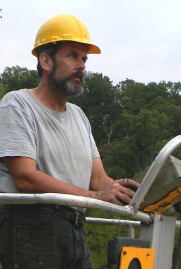You are hereDocumenting the rail car restoration
Documenting the rail car restoration
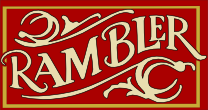 Ride the Rambler!
Ride the Rambler!
Here's a link to the Rambler website:
_____________________________________________________________________________________
When I was young, there were books about the future, they showed guys in space suits bouncing around on the moon, they showed modern cities like a bubble; where everything was new technology. Well, here we are, and what has happened should have been predictable. It's not what they showed, but it's not all bad, either. In fact, I rather like the way some things have merged: the past with technology. People are documenting and sharing information about historic restorations and methods as never before. In the sign trade, I often hand draw high contrast clip art, then make a vector file from it, which can be used to cut vinyl graphics, make printed materials, even plasma cut steel plate.
I once was reading a forum for blacksmiths; the question was asked whether an anvil owner should modify the face of his anvil. The reply was interesting; he was told that we are just the temporary keeper of something like an anvil. It will outlast its owner be generations, so do not change it, or be very careful when doing so.
That has bearing on how I restore this railroad equipment. As I scraped and sanded, I found surprises and questions. I wanted future workers to know what I found, and what I did. This help them do a better job, and save them time. Not only that, this documented information can help others in their projects, be interesting to web readers, and, it's just a lot of fun recording all this stuff.
I don't know what the academic world considers acceptable standards for documentation, but what you see in these articles is a fraction of the total information I have. I not only have pictures, but plastic bags with material samples in them.
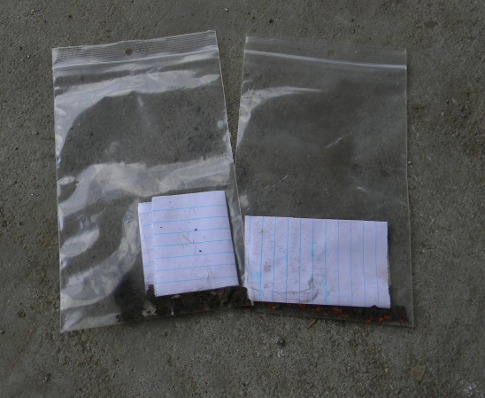
I have samples of metal, wood, even horse hair insulation! That's what I was told these cars are insulated with. You can see a picture of this hair insulation mat below. The picture is taken in a small utility room, looking up through a hole in the ceiling.
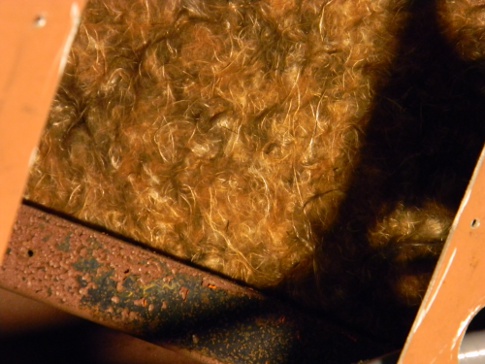
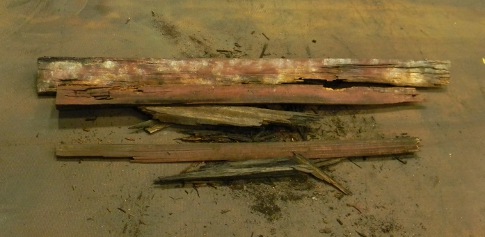
I think this blend of old and new will continue. Here are a couple of predictions along those lines: Just as Drupal CMS is designed with the idea that a number of people can participate in the building of a website; I envision some workplaces having a website where employees and contractors can document what they've found. The continual updating would drive more traffic to the site, and be a documentation of those workers' abilities, like an ongoing resume.
The other prediction is, well, out of my league in terms of what's actually technically possible, but hey just for the fun of it: There are "3D printers" available right now, within the price reach of some companies. What they do is create a three dimension part from a computer file. Sort of like how a plotter cuts vinyl letters and clip art from a vector file.
So....what if in the future, you could go on down to your local Fed Ex Kinkos, or UPS store, something like that; and there was a molecular analyzer. You pay $3.50, put in your ancient sample of horse hair insulation, and watch it print out the results. Based on data from other analyzing machines connected on the web, it tells you that this sample was taken from draft horses living at a large stable in the midwest, or from race horses living on the east coast, in the year 1932.
It's fun to contemplate, it's also fun to have the camera around for unexpected shots. Here's one of the coal delivery for the Rambler, which came in while I was working on the rail car.
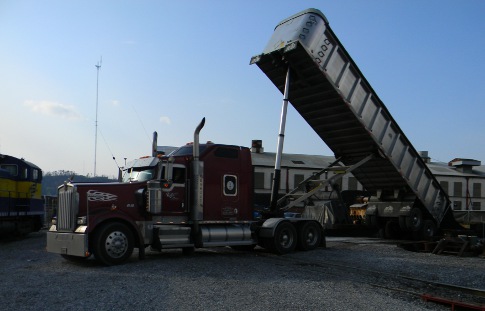
Here's a link to the Rambler website:
